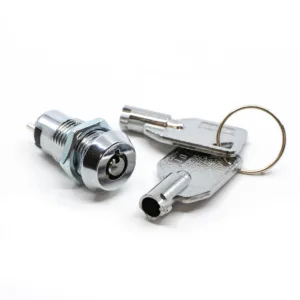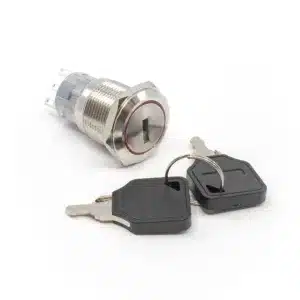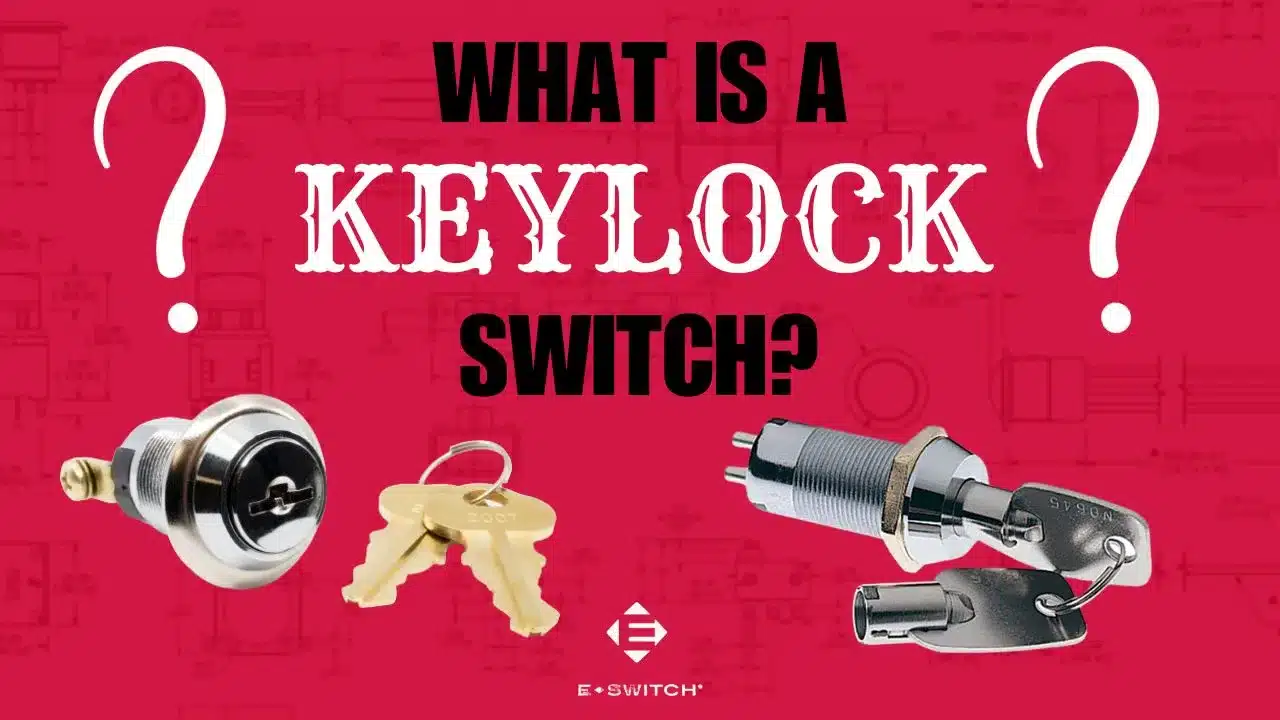What is a Keylock Switch?
A keylock switch is a type of electrical switch that’s operated by turning a key. It’s commonly used to control access to electrical devices or systems, such as machinery, electronic equipment or security systems. They offer a physical barrier to prevent casual or unauthorized operation of equipment. The switch typically has multiple positions or modes, and the key can be turned to select the desired position.
How do Keylock Switches Work?

Here’s a basic overview of how a keylock switch works:
#1. Key Mechanism: The switch has a cylindrical or tubular key that’s inserted into the switch. The key usually has a unique pattern that matches the internal mechanism of the switch.
#2. Locking Mechanism: Inside the switch, there’s a locking mechanism that engages or disengages based on the position of the key. When the key is turned, it moves internal components to either permit or prevent the flow of electrical current.
#3. Contacts: The switch has electrical contacts that make or break the circuit connections. These contacts are controlled by the position of the key. When the key is turned to the “on” position, the contacts close, allowing the electrical current to flow. In the “off” position, the contacts open, interrupting the current.
#4. Multiple Positions: Keylock switches often have multiple positions or modes, each corresponding to a different function or state. For example, they might have positions for “off,” “on” and “emergency stop.”
#5. Security and Access Control: One of the primary purposes of a keylock switch is to provide a level of security and access control. By requiring a physical key to operate the switch, it restricts unauthorized individuals from manipulating the connected equipment or systems.
What Are They Used For?
Some common applications include:
- Audio/visual equipment
- Security devices
- Industrial controls
- Kiosk controls
- Electrical housewares
- Medical equipment
- Security applications
- Personal transportation vehicles
Pros & Cons

Keylock switches have their advantages and disadvantages, and their suitability for a particular application depends on the specific requirements and considerations.
Pros
#1. Security: One of their primary advantages is the security they provide. They require a physical key for operation, which adds a layer of access control and prevents unauthorized individuals from easily manipulating equipment or systems.
#2. Access Control: They enable controlled access to equipment or systems. Only individuals with the appropriate key can operate the switch, reducing the risk of accidental or intentional misuse.
#3. Physical Deterrent: The presence of a keylock switch itself can act as a deterrent to unauthorized users. It signals that access is restricted, discouraging tampering or unauthorized operation.
#4. Multiple Positions: They often come with multiple positions, allowing for different functions or modes. This versatility can be advantageous in applications where various operational states are required.
#5. Reliability: They’re often robust and reliable, with a simple mechanical design that tends to withstand harsh environmental conditions.
Cons
#1. Key Management: The need to manage physical keys can be a logistical challenge. If multiple keylock switches are in use, maintaining control over the keys and ensuring they are in the hands of authorized personnel can be complex.
#2. Key Duplication: If not properly controlled, the risk of key duplication exists. Unauthorized individuals might attempt to duplicate keys to gain access, compromising the security of the system.
#3. Limited Tracking: Unlike electronic access control systems, keylock switches typically do not provide detailed audit trails. It may be challenging to track who accessed the switch and when.
#4. Mechanical Wear: The mechanical components of keylock switches can wear out over time with frequent use. This may lead to issues such as key sticking or difficulty in turning the key.
E-Switch Keylock Products
E-Switch offers both the KO Series Keylock Switch and the PVK4 Series Illuminated Anti-Vandal Switch for keylock products.
The KO Series is highly customizable with a variety of size and product package options for your application. You can choose between barrel or flat key options, key code options and more. Dozens of types and sizes of keylock switches are available. You can have anywhere from one to 5,000 key codes (the uniqueness of the key) dependent on the series.
The PVK4 Series is rated IP65 for dust and moisture protection with a keylock actuator option rated IP40. The switch features a stainless steel body and actuator finish meant for a panel cutout 19mm in diameter.
